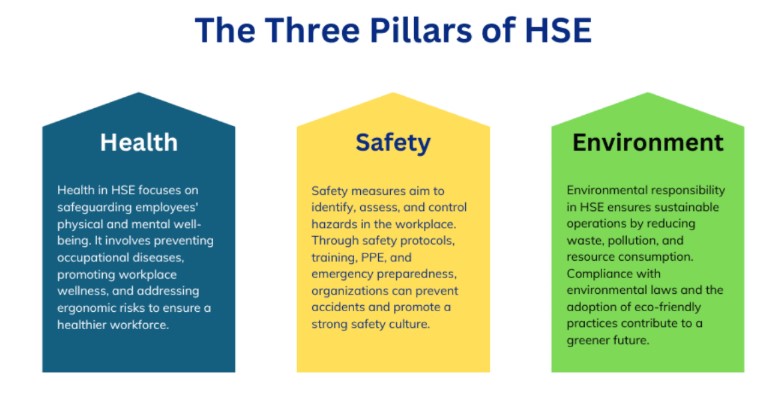Building a Strong Safety Culture at Work – A Step-by-Step Guide
A Well-Documented Safety Policy is Not Enough: Building a Strong Safety Culture
A well-documented safety policy means nothing without a solid safety culture backing it up. A safety culture is one where employees not only adhere to safety protocols but actively engage in promoting safety for themselves and their colleagues. When safety becomes a shared responsibility, it leads to fewer incidents, improved morale, and higher productivity.
Organizations with a strong safety culture experience better compliance, a reduction in workplace accidents, and increased employee trust. A positive safety culture can significantly improve the overall well-being of employees and create a more effective workplace.
What Is a Safety Culture?
A safety culture refers to the shared values, beliefs, and behaviors that shape how safety is managed and practiced within an organization. It’s the collective attitude towards safety that is reflected in how everyone—from top management to entry-level workers—views and acts on safety practices.
Safety culture is not just about following a written policy; it’s about embedding safety into the organization’s DNA—making it a natural way of thinking and behaving for all employees. A strong safety culture ensures that safety is a priority in every action, decision, and interaction in the workplace, making it an integral part of day-to-day operations.
Pillars of a Strong Safety Culture
Building a strong safety culture requires establishing key principles that guide employees in both their attitudes and actions toward workplace safety. The following are the pillars of a successful safety culture:
1. Leadership Commitment
Safety starts at the top. When leadership makes safety a top priority, it sets the tone for the entire organization. Leaders should consistently demonstrate their commitment to safety by:
Prioritizing safety in meetings, budgets, and operational decisions.
Participating in safety programs and setting an example for employees to follow.
Providing resources for safety improvements and initiatives.
Outcome: When employees see that leadership is serious about safety, they are more likely to adopt the same mindset and make safety a part of their daily routine.
2. Behavior-Based Safety (BBS)
Instead of merely punishing unsafe behaviors, a Behavior-Based Safety (BBS) approach encourages positive reinforcement and personal responsibility.
BBS focuses on understanding and reinforcing safe behaviors—for example, recognizing employees who practice safe lifting techniques, report hazards, or help others follow safety protocols.
Key elements of BBS:
Behavior observations: Regular observations of employee behaviors to identify and reinforce safe practices.
Feedback: Offering constructive feedback to employees regarding their safety behaviors.
Empowerment: Encouraging employees to take personal responsibility for their own safety and the safety of their colleagues.
Outcome: A BBS approach helps empower employees to take ownership of safety, leading to a proactive, rather than reactive, safety culture.
3. Continuous HSE Training
Continuous training is crucial to keep safety knowledge fresh and ensure that employees are well-prepared to handle various workplace hazards. Regular toolbox talks, safety drills, and hands-on training ensure employees have the right skills to work safely.
Topics to include in ongoing training:
Risk recognition and hazard identification.
Proper PPE use and how to assess when it is necessary.
Emergency response protocols to ensure employees know what to do in case of an incident.
Outcome: Continuous HSE training keeps employees informed and engaged, reinforcing the safety mindset and ensuring that workers know what to do in various situations.
4. Open Communication & Reporting
For a safety culture to thrive, there must be a blame-free environment where employees feel comfortable reporting unsafe behaviors, near-miss incidents, and potential hazards without fear of retaliation.
Transparent reporting systems allow employees to speak up about safety concerns or offer suggestions for improvement, leading to:
Timely hazard identification.
Quick corrective action before a potential incident occurs.
Outcome: Creating a trusting and open environment fosters a culture where safety is prioritized, and workers take an active role in protecting themselves and their peers.
5. Recognition & Reward Programs
Recognizing and rewarding employees who demonstrate exemplary safety practices reinforces positive behavior and motivates others to follow suit.
Examples of recognition:
Monthly safety awards for teams or individuals.
Safety milestones such as injury-free months.
Public acknowledgment in company meetings for those demonstrating exceptional safety practices.
Outcome: Positive reinforcement boosts morale and creates a culture of accountability, where employees take pride in maintaining a safe workplace.
Measuring Progress in Your Safety Culture
To evaluate the effectiveness of your safety culture and ensure continuous improvement, it’s essential to track performance through both leading and lagging indicators. These metrics provide insights into how well the safety culture is developing and where adjustments may be needed.
Leading Indicators
Participation in safety meetings: Tracks the level of engagement with safety initiatives and employee involvement.
Number of safety observations submitted: Reflects the proactiveness of employees in identifying and reporting safety hazards.
Training participation rates: Measures how many employees are actively engaged in safety education and skill-building.
Lagging Indicators
Total Recordable Incident Rate (TRIR): Tracks the number of injuries or illnesses per hours worked and shows the effectiveness of safety measures.
Days Away, Restricted or Transferred (DART): Indicates the severity of workplace incidents.
Lost Time Injuries (LTI): Measures the number of injuries that resulted in work absences.
Together, leading and lagging indicators help you assess the maturity and effectiveness of your safety culture, allowing for timely interventions and improvements.
Conclusion
A strong safety culture is the backbone of any successful Health, Safety, and Environment (HSE) program. It goes beyond policies and procedures—it’s about creating a work environment where safety is a shared value, deeply ingrained in everyday practices.
By fostering leadership commitment, implementing behavior-based safety programs, training employees, ensuring open communication, and providing recognition, organizations can build and sustain a safety-first culture.
Tracking leading and lagging indicators will ensure that the safety culture continues to evolve, keeping employees safe and engaged, and maintaining a productive and efficient workplace.
Ultimately, a strong safety culture not only protects employees but also improves operational performance, employee morale, and company reputation, setting the foundation for long-term success.


